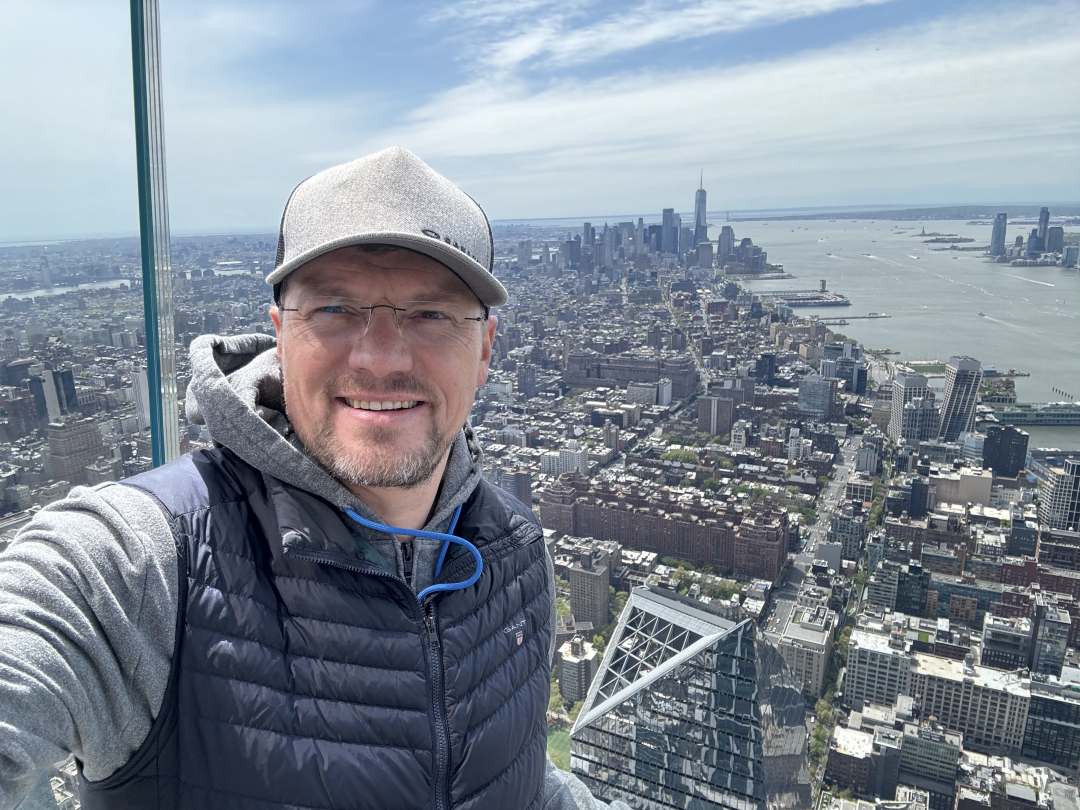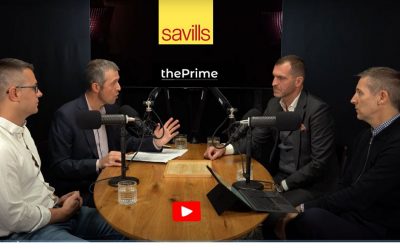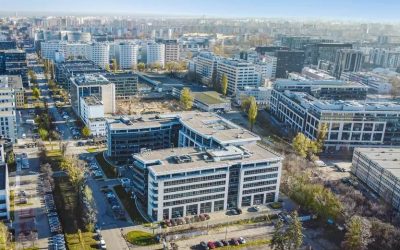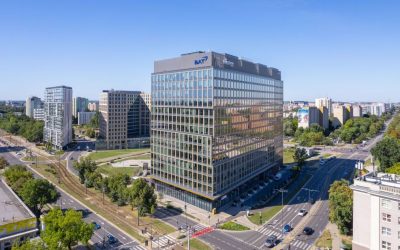What’s going to change about Penta Real Estate now that you’ve replaced Petr Palička?
I’ve been with the company 16 years, Petr was here 17 years. We shaped the company together, so this is just evolution, not a revolution. The company grew organically, and sometimes at a pretty wild pace. Deals and business were the main priority. At this point, we’ve reached the size where we have to become more corporate. We definitely don’t want to be just a normal corporation, but we’ll have to take on some corporate-like elements. We need structures and procedures. There were only five of us in the beginning. Now there are 100 of us in the Czech Republic. We’ll have to change from a company that was managed in a sort of natural way to one that’s structured.
The other thing is that the company has reached the limits of its growth in the Czech and Slovak markets. We’re the leader in offices and if we want to do the middle, higher and highest levels of the residential market, then there’s still some potential for growth. But since we don’t want to get involved in the mass product market, we’ll be looking abroad by the end of the year, or by next year.
Just to be clear, you’re saying you’ve reached the limits of the annual volume you can produce here?
Yes. We know we can build roughly one office building per year here and sell between 500 and 600 flats. We have 300 for sale at the moment, we could do 500 – 600 next year. But we can’t sell 2,000 flats here because we’d have to develop a different product.
Penta is also opening up to outside investors for the first time…
That’s a fundamental change because the moment you have ‘external’ money, then you have to do reporting and make presentations. That’s part of this shift to becoming more corporate-like…things that we’ve done naturally until now will have to be done regularly. Finally, we’ll be looking at certain alternative products, like senior housing, student housing, rental residential and so on. That would mean we can do hotels, offices and residential, but we’d also like to have a third of our output be in alternative products that could become normal investments in the future.
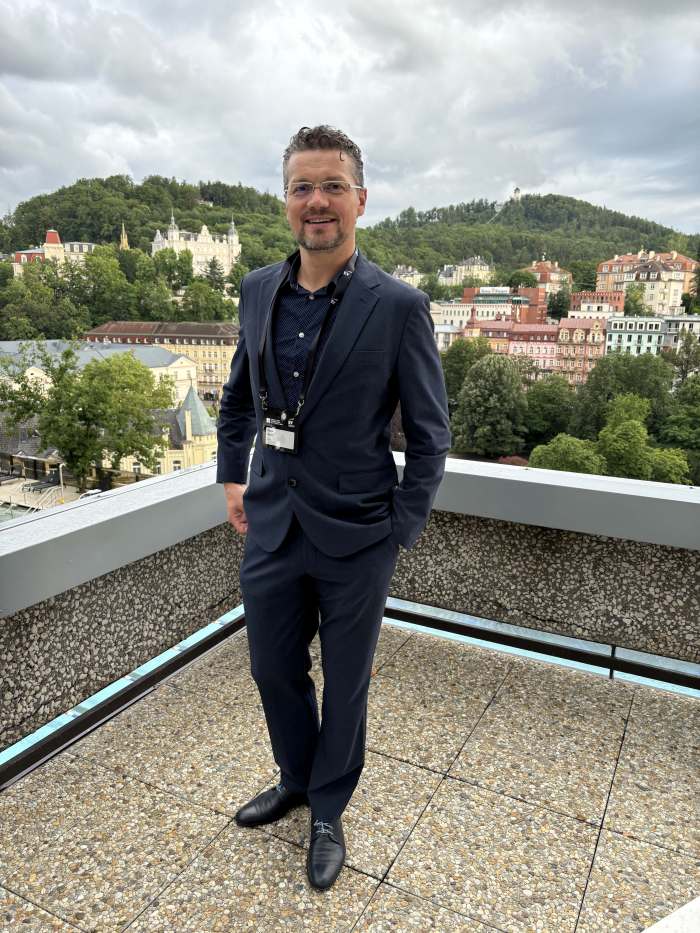 You’re working on large development zones for entire neighborhoods that stretch from Florenc to the Main Station. That increases the public pressure on you to “get it right.” The size of these projects carry with them greater levels of responsibility towards the public.
You’re working on large development zones for entire neighborhoods that stretch from Florenc to the Main Station. That increases the public pressure on you to “get it right.” The size of these projects carry with them greater levels of responsibility towards the public.
We see it this way too, and we feel this responsibility. In part it’s because we live here, but at the same time we’re forming the city. For us it’s not just a way to make money. It’s something we enjoy, something which inspires us and it’s something we’re proud of. We’ve always said we’re ready to reduce our profits if the building we’re developing will look better or if we can add some extraordinary work of art there. It’s in our DNA. We’re not trying to squeeze every last drop out of the lemon. In the end, it’s sometimes even more profitable to spend more on a project. We invested a good deal more on the façade for Victoria Palace than we he planned. But we made that up many times over in the price of the flats.
That’s important to your investors, of course. But the trickier part is you also have to persuade the city you’re your projects will improve the city.
It is, but we know we’re doing it the right way. Right from the beginning, we make the choice of architect in a very transparent way though architectural competitions under the auspices of the Chamber of Architects. We use experts who advise us on our choices, and we don’t even have a majority of votes in the jury. Then there’s public participation, which we don’t treat as just some kind of annoying problem. We see it as an opportunity to collect information about what people need, what they’re looking for, or what sort of products or retail functions are missing. In the end, it’s a way to help people get past the biggest problem people have, which is fear of the unknown.
There are people who worry that the latest plans for development above the Main Train station tracks simply look too huge. That they’re not human in scale.
But nothing is even close to being decided yet! And there’s no way to know at this point what will end up getting built. This will happen through a process of dialogue that’s barely even begun. Everyone will be involved, from organizations like SŽ, CD, the Ministry of Transport, the Ministry of Culture to Prague 1, 2, and 3, IPR, and so on. It’s clear this discussion will take a long time, that it will have several phases, and there will be some sort of competition. Because this is not just about the station. We have to talk about the Magistral road, about all the connections, about the parking garage and some major infrastructure investments like the connection of the metro D line.
Is it a bad time now to start offices, given the nervousness investors seem to have in that segment?
I wouldn’t really say that. Our experience is that as long as we’re in a central location, offices work well, and it’s a product that belongs there. It’s as competitive as residential. Whenever we’ve done evaluations to compare whether offices or residential would perform better, offices always came out on top. Rents of under €20 are a thing of the past, you know. In the center of Prague, it’s now €25 and in exceptional cases like Masaryčka it’s €30 and more. Rents over €35 aren’t unheard of for smaller units. We think there’s a real lack of office space in the center. We bought the Bastion project from ČSAD, which is 50% leased. That should be almost full by the end of the year.
Prague 1 already suffers from a decline in the number of residents. If yields are still more profitable for office projects in the center than they are for residential, does that mean you won’t be building any residential there?
We couldn’t do that even if we wanted to. We’ve agreed with the city that we’ll be building at least 40% residential on our land around Florenc. What’s been missing in the center are new, high-end flats. That’s why next year, we’ll start sales next year at our Petrské nám. project, as well as at Trangas and Rohan Island. So, those who’ve been looking for top quality will finally have something to choose from.
Also in ThePrime
Milota Sidorová on Slovakia’s digital urban planning revolution
Martin Krupauer: ‘We have to succeed’ with Vltavská filharmonie

